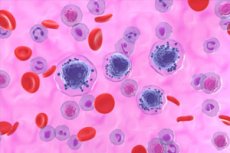New publications
Childhood leukemia can occur during intrauterine development
Last reviewed: 02.07.2025

All iLive content is medically reviewed or fact checked to ensure as much factual accuracy as possible.
We have strict sourcing guidelines and only link to reputable media sites, academic research institutions and, whenever possible, medically peer reviewed studies. Note that the numbers in parentheses ([1], [2], etc.) are clickable links to these studies.
If you feel that any of our content is inaccurate, out-of-date, or otherwise questionable, please select it and press Ctrl + Enter.

A team of researchers has shown that some childhood leukemias begin during embryonic development, although they do not become apparent until several months after birth.
The team includes researchers from the Institute of Oncology of the University of Oviedo (IUOPA), the Josep Carreras Leukemia Research Institute, the University of Barcelona and the Centre for Biomedical Research in Cancer (CIBERONC). The study is published in the journal Leukemia.
Acute myeloid leukemia is the second most common type of acute leukemia in children and can be diagnosed within the first months of life. The early onset of the disease has led to suspicion that the tumor may have a prenatal origin. However, proving this theory has been difficult due to the lack of prenatal or birth samples.
"The opportunity to study the origins of this leukemia arose thanks to the case of a 5-month-old baby diagnosed with acute myeloid leukemia at the Niño Jesús Hospital in Madrid," explains Pablo Menéndez, professor at ICREA at the University of Barcelona and the Josep Carreras Institute. "The parents, who saved the umbilical cord blood, opened up a line of research that had not been possible until now."
Using precision medicine techniques, the researchers analyzed the entire genome of the tumor. Unlike tumors in adults, where thousands of mutations are found, only two chromosomal abnormalities were found in this leukemia.
"Genomic analysis has allowed us to develop a personalized diagnostic method to monitor the disease," says José S. Puente, professor of biochemistry at the University of Barcelona. Puente is a professor of biochemistry and molecular biology at the University of Oviedo. "But these data raise new questions, such as when the tumor arose and in what order these mutations appeared," he adds.
These questions are difficult to answer because such studies require blood samples from the infant before diagnosis, which is not possible in the vast majority of cases. However, in this case, the existence of a frozen cord blood sample allowed the researchers to separate out the different populations of blood cells at birth and study whether any of the chromosomal abnormalities found in the tumor were already present during fetal development.
The study found that a translocation between chromosomes 7 and 12 was already present in some hematopoietic stem cells in the cord blood. In contrast, another chromosomal abnormality, trisomy 19, was not present in the fetus but was found in all tumor cells, suggesting that it contributes to the increased malignancy of leukemia cells.
"These data are extremely important for understanding the development of this devastating disease, and the existence of this cord blood sample was crucial to carry out a study that had not been possible in acute myeloid leukemia until now," adds Thalia Velasco, a researcher at the Josep Carreras Institute and the University of Barcelona, and co-author of the study.
In addition to reconstructing the genomic changes that cells undergo to cause this leukemia, the study also identified a molecular mechanism that has not previously been observed in this type of leukemia and that causes the activation of the MNX1 gene, which is often altered in this type of tumor.
Knowledge of these changes is necessary to develop cellular and animal models that will allow us to understand the evolution of the disease and develop new methods of treating these pathologies.
